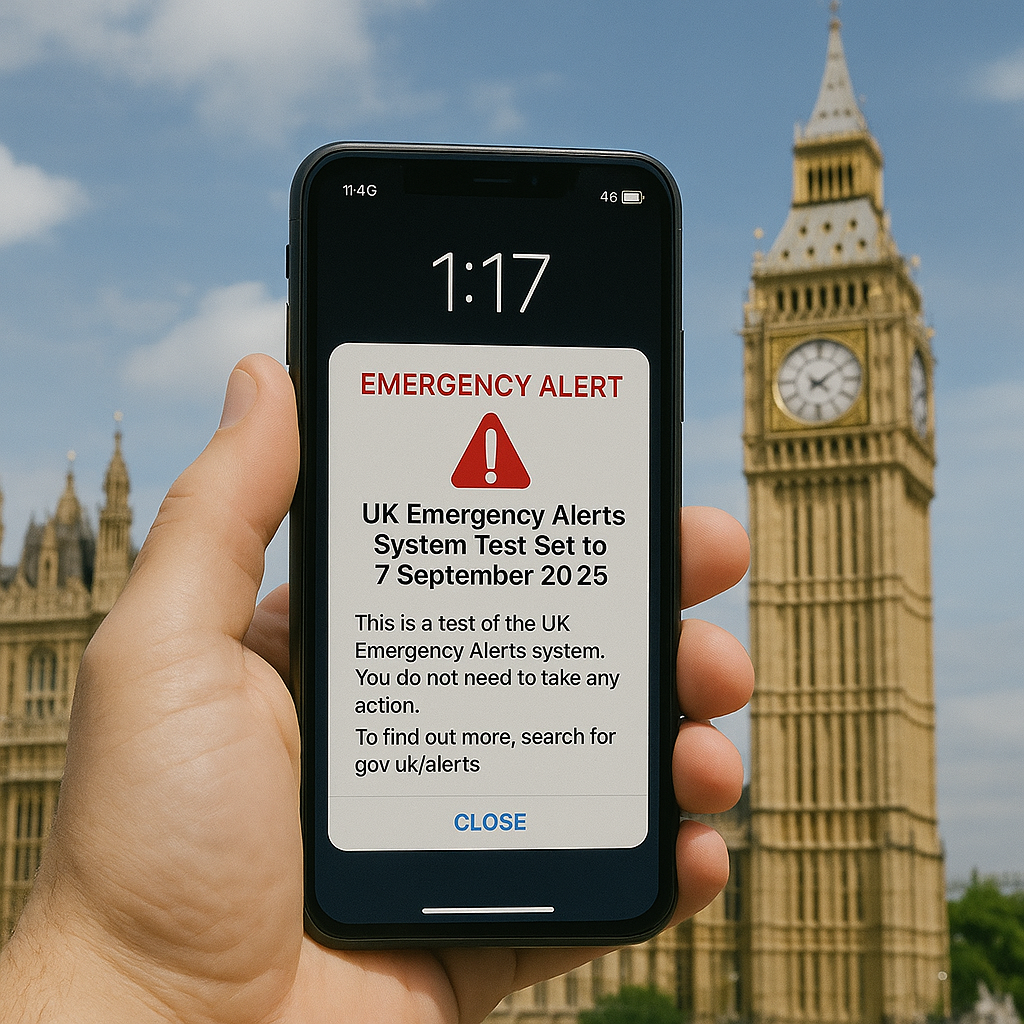The Emergency Alerts system is designed to quickly inform the public about life threatening emergencies, including severe weather events, natural disasters, and public safety risks. As climate change and civil emergencies become more frequent, these alerts play a vital role in ensuring public safety across the country.
What Will Happen During the Test?
At around 3:00 PM on Sunday, 7 September, nearly every mobile phone in the UK that is connected to a 4G or 5G network will receive a test alert.
When the alert is sent, compatible devices will:
- Emit a loud siren sound for about 10 seconds
- Vibrate briefly
- Display a message confirming that the alert is a test
Even if your phone is on silent mode, it will still produce sound and vibration. The test message will appear in both English and Welsh and will clearly state that no action is required.
Here is an example of the alert message:
This is a test of Emergency Alerts, a UK government service that will warn you if there’s a life threatening emergency nearby. You do not need to take any action. In a real emergency, follow the instructions in the alert to keep yourself and others safe. Visit gov.uk/alerts for more information.
The alert will disappear once it is acknowledged by tapping "OK" on the screen.
Device Compatibility and Requirements
To receive the alert, your mobile phone must:
- Be connected to a 4G or 5G network
- Be running iOS 14.5 or later (Apple devices) or Android 11 or later (most modern Android phones)
Older phones or those connected only to 2G/3G or Wi-Fi networks will not receive the alert. Devices that are switched off, in airplane mode, or have emergency alerts manually disabled in their settings may also not receive it.
If you’re unsure whether your device is eligible, you can check your phone’s settings:
- On iPhones: Go to Settings > Notifications and scroll to the bottom to find Emergency Alerts
- On Android phones: Go to Settings > Safety & emergency or Wireless emergency alerts
Why the Test Matters
Assessing the Emergency Alerts system enables the government and mobile networks to determine the effectiveness of alert delivery and uncover any technical problems. It also helps the public recognize what the alert appears and sounds like so they can react suitably during a real emergency. This system is based on comparable services in nations such as the United States, the Netherlands, and Japan, where mass notifications have shown to be effective in preserving lives during earthquakes, tsunamis, and hurricanes.
Looking Ahead
With the UK adapting to climate emergencies and various security issues, the Emergency Alerts system plays a crucial role in the national safety strategy. From flood alerts to major evacuations, the system is created to provide you with the time and details necessary to remain secure. Regardless of being a resident, traveler, or business owner, grasping how the system operates and what to anticipate during the forthcoming test can significantly impact outcomes.
Helpful Resources
- Official government page: gov.uk/alerts
- Device compatibility and opt-out settings: gov.uk/guidance/emergency-alerts
- Safety and preparedness advice: gov.uk/prepare
Stay informed, stay safe. This test is a small step toward better preparedness for all of us.

